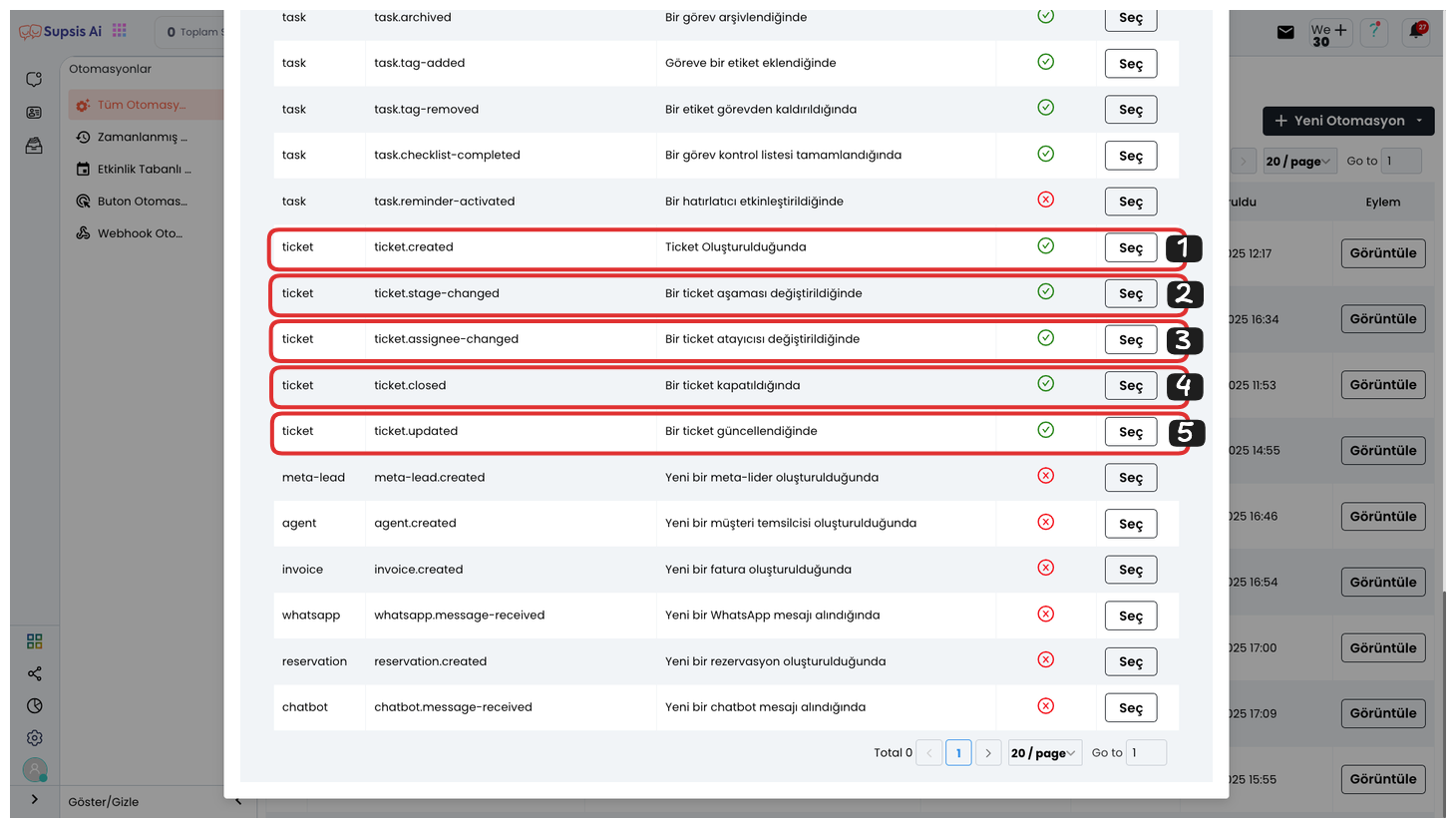Ticket System Action Based Automations
Ticket System Action Based Automations are automations that are triggered as a result of changes occurring in the Ticket module. These types of automations ensure that specific actions are taken automatically when a ticket (support request) is created, updated, or closed. For example, when a customer creates a new support request, an agent can be assigned to this ticket or a specific operation can be performed. When a ticket is updated, notifications can be sent to relevant parties by triggering status changes or responses. When a ticket is closed, the workflow can be completed as resolved. These automations speed up customer support processes, reduce error rates, and provide a more efficient support experience.

Ticket System Action Based Automations:
- When a Ticket is Created
- When a Ticket Stage is Updated
- When a Ticket Assignee is Changed
- When a Ticket is Closed
- When a Ticket is Updated
1-) When a Ticket is Created
This Automation is automatically activated when a ticket is created. That is, when a customer or user creates a support request, the system automatically starts the actions you determine. For example, when a new ticket is created, an automatic notification can be sent, a task can be created, or a redirection can be made to the relevant department. Ticket creation speeds up and makes customer support processes more efficient, because each new ticket instantly triggers the determined actions and facilitates tracking. This automation type helps increase customer satisfaction and optimize workflows.
2-) When a Ticket Stage is Updated
This Automation is activated when a ticket stage is updated. That is, when a ticket's status changes, for example, from "In Progress" to "Completed", the system automatically starts the actions you determine. This allows you to quickly track updates in workflows. For example, when a ticket's stage is updated, a notification can be sent to the relevant agent, a follow-up task can be created, or communication with the customer can be established. These types of automations make ticket management more efficient and ensure that processes proceed systematically.
3-) When a Ticket Assignee is Changed
This Automation is activated when a ticket assignee is changed. That is, when a ticket that was previously assigned to an agent is transferred to another agent, the system automatically starts the actions you determine. For example, when the assignee changes, a notification can be sent, task definition can be made to the new agent, or a specific operation may need to be performed. This automation allows you to quickly and effectively track handover processes in ticket management, thus ensuring that customer requests are directed to the right agent.
4-) When a Ticket is Closed
This Automation is activated when a ticket is closed. That is, when a customer request or support request is completed and the ticket is terminated, the system automatically starts the actions you determine. For example, when a ticket is closed, a thank you message can be sent, a closed ticket report can be sent to the relevant department, or customer feedback can be requested. This automation makes the ticket closure process more efficient and helps increase customer satisfaction.
5-) When a Ticket is Updated
This Automation is activated when a ticket is updated. That is, when any change is made to a ticket, the system automatically starts the operations you determine. For example, when a new note is added to the ticket, a field is updated, or the assigned agent changes, the automation can be triggered. This automation makes ticket management more efficient, thus ensuring that updated information is quickly processed and making the tracking process more organized.